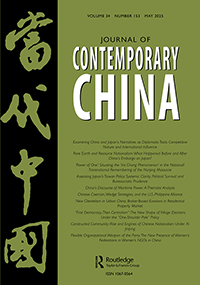
Jules Zhao Liu
Journal of Contemporary China
Abstract: This article investigates mass surveillance in China during the public health emergency (PHE) from 2020 to 2022. Drawing on ethnography, governmental documentation, and news reports, I provide an empirical account of how the PHE drove the transformations of mass surveillance: dataveillance prevailed over visual surveillance; participatory surveillance outweighed state-monopolized surveillance; and surveillance was used for predictive/preventative purposes more than reactive/explanatory purposes. These changes resulted in a new modality of surveillance: participatory Panopticon (citizens were engaged in the state’s surveillance system as objects and tools for the exercise of power). This study elaborates on the mechanism of this mode of surveillance. I reveal that behind the surveillance transformations lies China’s digital politics—digitalization of governance as a primary goal in the government’s agenda. Arguing that dataveillance lies at the core of digital governance, the implications of this study show that continuous building of digital governance will probably change the state-society relations: the rapid development of dataveillance technologies will empower the state to ‘swallow up’ society eventually.
About the author: Jules Zhao Liu was a HYI Chinese Politics Training Program Visiting Fellow from 2016-17.
